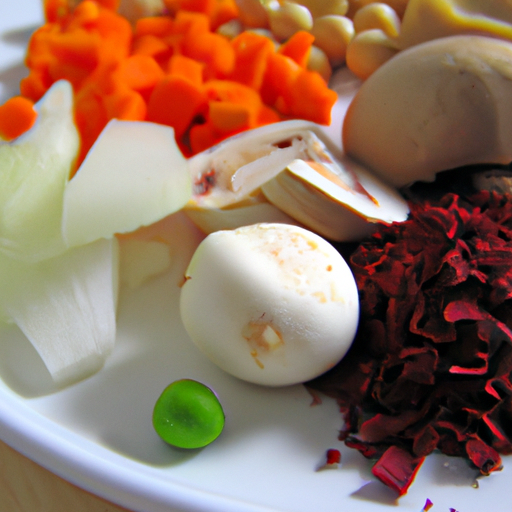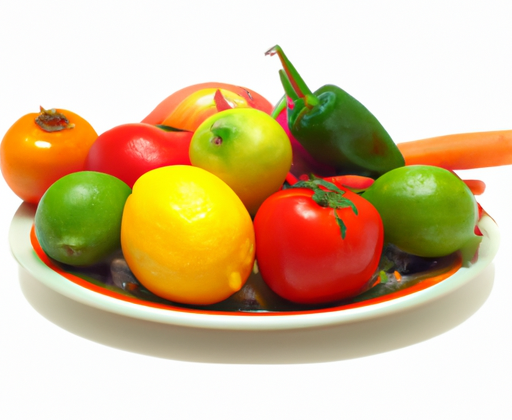Introduction
What exactly is “fusion food”? Well, it’s the holy grail of the culinary world. A blend of two or more cuisines from different cultures, regions, or countries. Think Italian-Thai or Mexican-Chinese fusion. And while there are both pros and cons to this unique style of cooking, it’s become increasingly popular in recent years. I’m here to give you the lowdown on all things Fusion Foods.
Overview of Fusion Foods
When it comes to food, folk like to mix things up. Fusion cuisine takes delicious dishes from around the world and takes them to new heights with mix-and-match ingredients, creating unique flavors and textures. It’s a tasty way to explore cultures and add a little something special to any menu.
Fusion foods can be traced all the way back to the ancient Greeks and Romans who used spices from different areas. But fusion as we know it today really started in the 1950s. Celebrity chefs combined traditional cooking methods with new tastes and ingredients, creating a whole new genre of cuisine.
Today, fusion food has grown into a full-blown culinary experience. Chefs are taking flavors and ingredients from all kinds of cultures and countries to turn up the heat. From a blend of Chinese and French cuisines, to Mexican and Indian cuisine, the possibilities of this one-of-a-kind cuisine are virtually endless.
Pros and Cons of Fusion Foods
When it comes to fusion foods, there are two sides to every story. On one hand, you’ve got the tastiness and creativity that come with combining flavors and cultures, but then again, you don’t always get the authenticity that some people crave in their cuisine.
Let’s start with the pros. If you’re a fan of different flavors and enjoy experimenting with food, then fusion dishes are right up your alley. You get to combine elements of various cuisines, creating totally unique dishes that can only be found in a particular restaurant or home. Plus, if you’re looking for something new, exciting, and different from the traditional fare, try a fusion dish. From Korean-Mexican tacos to Italian-Indian burgers, there’s no limit to the combinations you can explore.

On the flip side, some may argue that by combining different cultures, you take away from the integrity of each cuisine. Not all fusion foods are created equal, so it can be hard to achieve the same quality and flavors as with traditional dishes. Also, fusion dishes tend to be more expensive than single-culture options, so you’ll have to decide if it’s worth the extra cost.
So, while fusion foods offer the chance to sample exotic tastes and flavors, they also come with a few cons that need to be considered before digging in. The key is to find balance and make sure the experience remains true to both cultures involved.
Impact of Fusion Foods on Culture
It’s an understatement to say that the impact of fusion foods on culture has been significant. The introduction of international culinary traditions has completely transformed the ways in which food is prepared and consumed all over the world. While some are still clinging to traditional methods, many have embraced this global phenomenon with open arms.
The widespread acceptance of fusion cuisine has enabled cultures to come together in a way that was previously impossible. From sushi burritos to ramen burgers, innovative dishes provide an opportunity for cultures to learn about each other’s cuisines and create something that would otherwise not exist. By blending two different styles of cooking, we can create our own unique style that celebrates the cultures from which it originates.
On the flipside, one could argue that this trend of fusion foods has led to a homogenization of cultures. With so much globalization occurring today, it can often be difficult to distinguish one culture’s influence on another. The merging of cuisines may take away some of the unique characteristics that make each culture special.
While there are definitely pros and cons to this type of food, no one can deny its impact on the cultural landscape. Fusion foods continue to gain popularity and their influence can be felt in restaurants and markets around the globe. They have helped bridge gaps between cultures while also introducing us to new and exciting flavors.
Conclusion
Fusion foods have become increasingly popular in the culinary world, and it’s easy to understand why. They combine the best of both worlds—regional dishes from around the world with a unique twist that no single cuisine can offer. While they have their advantages and disadvantages, fusion foods have plenty to offer. However, it’s important to be aware of the potential impact they could have on cultures as well.
At the end of the day, it’s up to each individual to decide whether or not to try fusion cuisine. If you do, just remember that it’s more than just a meal: it’s a way of experiencing different cultures. So, get out there, be daring, and explore the world through your taste buds!
Frequently Asked Questions About Fusion Cuisine
What are some cultural foods?
Yes, fusion foods are definitely a type of cultural food. Fusion foods combine flavors, ingredients and traditions from different regions, cultures and countries. So, rather than just following the traditional recipes from one culture, fusion foods allow chefs to take the best from a variety of cuisines, creating creative and unique dishes.
Examples of cultural foods include Asian foods like sushi, Chinese stir-fries and Indian curries. There is also the Latin American flavors like Cuban sandwiches, Brazilian feijoada and Mexican tacos. African dishes such as African-style jollof rice, Moroccan kebabs and Ethiopian wat can also be considered cultural foods.
Fusion foods are a great way to experience different cultures and their different flavors. There is a wide variety of fusion dishes like Mexican-Italian burritos, Hawaiian-Japanese poke bowls, Italian-Indonesian lasagna, and Korean-Mexican tacos. Each fusion dish brings together the unique flavors of both cultures, creating unique and delicious dishes. You can also create your own fusion food, combining two or more cuisines that you like.
In conclusion, fusion foods are cultural foods that bring together the flavors of different regions, cultures and countries. They give chefs the opportunity to create new dishes, and give foodies the opportunity to experience different cultures. So if you’re looking for something different for your next meal, give fusion foods a try!
What is an example of fusion culture?
Fusion foods are a great way to explore different cultures. They combine elements from different cuisines to create something entirely new and exciting. For example, you can find Mexican-Italian fusion dishes featuring chilies, enchiladas, and parmesan cheese. You can also find Indian-Chinese fusion dishes featuring creamy curries and fried noodles. Fusion foods give us the opportunity to try dishes from around the world in one plate.
Fusion foods are a great way to explore different cultures and mix things up. They provide a unique experience and often result in tastier foods than those from individual cuisines. Not only do they give us the opportunity to try something new, they also broaden our horizons by introducing us to flavors and ingredients we may not have otherwise encountered. In addition, they give us the chance to explore cultures that may be different from our own, allowing us to gain a deeper appreciation for other cultures.
In conclusion, fusion foods can be thought of as cultural foods, as they combine and represent multiple cultures. They provide an exciting way to explore the flavors of different cultures, while also giving us an opportunity to experience each culture in a unique and flavorful way. If you are looking for a way to explore different cultures, then give fusion foods a try!
Where did food fusion originate?
I’d say yes, fusion foods are definitely cultural foods! While the concept of food fusion is relatively new, it’s rooted in centuries-old traditions. In fact, some historians trace the concept all the way back to Medieval Europe and Asia, when various cultures blended together to create new and interesting dishes. In the modern world, food fusion has become even more popular, with chefs taking inspiration from their own cultures and mixing and matching ingredients from around the globe.
In terms of where food fusion originated, there’s no one definitive answer. Some trace it back to the United States, where chefs began to experiment with bringing together flavors from different cultures into a single dish. Others believe it was born in the Caribbean, where African, Spanish, and French cultures all came together to create distinct and flavorful dishes. Still others point to the Middle East, where for centuries Arab and Persian cultures have had a huge influence on the flavors, spices, and ingredients that are used in the region’s cooking.
No matter where it began, food fusion is certainly here to stay! The possibilities are endless when it comes to creating dishes that combine different cultures and flavors, and the results can be spectacular. So if you’re looking to add some variety to your menu, why not give fusion food a try?

